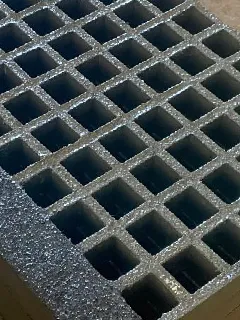- No. 9, Xingyuan South Street, Dongwaihuan Road, Zaoqiang County, Hengshui, Hebei, China
- admin@zjcomposites.com
- +86 15097380338
- Welcome to visit our website!
frp water storage tank
FRP Water Storage Tanks A Comprehensive Overview
In recent years, the demand for efficient and durable water storage solutions has led to the increased popularity of Fiber Reinforced Plastic (FRP) water storage tanks. These tanks are a testament to modern engineering, combining strength, lightweight properties, and resistance to corrosion. In this article, we will explore the features, advantages, applications, and maintenance of FRP water storage tanks.
Understanding FRP
FRP is a composite material made from a polymer matrix reinforced with fibers, usually glass, carbon, or aramid. The inclusion of these fibers enhances the mechanical properties of the material, making it a popular choice for various applications, including water storage. FRP tanks are manufactured using advanced techniques that ensure uniform thickness and strength, making them suitable for holding large volumes of water.
Advantages of FRP Water Storage Tanks
1. Corrosion Resistance One of the most significant advantages of FRP tanks is their resistance to corrosion. Unlike traditional metal tanks, which can rust over time, FRP tanks maintain their integrity even in harsh environments. This makes them ideal for storing water in areas with high salinity or chemical exposure.
2. Lightweight FRP tanks are considerably lighter than steel or concrete tanks, facilitating easier transportation and installation. This lightweight nature reduces the structural load on the supporting framework, making it a preferred choice for various applications.
3. Durability With a lifespan that can exceed 30 years, FRP tanks are built to last. Their resistance to UV rays, temperature fluctuations, and adverse weather conditions ensures that they remain functional for an extended period without significant degradation.
4. Customizable Design FRP tanks can be designed and manufactured in various shapes, sizes, and colors to meet specific client requirements. This flexibility allows for tailored solutions that fit within space constraints and aesthetic preferences.
frp water storage tank

5. Economical Although the initial investment in FRP tanks may be higher than that of traditional materials, their low maintenance requirements and longevity often result in cost savings over time.
Applications
FRP water storage tanks are versatile and can be used in various sectors, including
- Industrial Used for storing process water, chemicals, and other liquids. - Agriculture Ideal for storing irrigation water and rainwater harvesting. - Residential Serving as potable water storage tanks for households. - Wastewater Treatment Employed in holding tanks for effluent treatment processes.
Maintenance of FRP Water Storage Tanks
Maintaining FRP tanks is relatively straightforward. Regular inspections for signs of wear, leaks, or damage are crucial. Cleaning the interior periodically ensures that the water remains uncontaminated. Furthermore, applying protective coatings can enhance the longevity of the tank by shielding it from UV and environmental damage.
Conclusion
In summary, FRP water storage tanks offer a robust, durable, and versatile solution for various water storage needs. Their unique properties not only address the challenges posed by traditional materials but also provide long-term economic benefits and adaptability to different environments. As industries continue to evolve, FRP tanks will undoubtedly play a pivotal role in future water management strategies. Embracing this technology is not just a step towards modernization; it's a commitment to sustainability and efficiency in water storage solutions.
-
Why Choose a Galvanized Water Tank for Your Storage NeedsNewsMay.21,2025
-
The Strength and Durability of FRP GratingNewsMay.21,2025
-
The Importance of Water Treatment Systems for Clean and Safe WaterNewsMay.21,2025
-
The Advantages of FRP Rebar for Construction ProjectsNewsMay.21,2025
-
Say Goodbye to Hard Water with a Reliable Water SoftenerNewsMay.21,2025
-
Maximize Your Water Storage with a Sectional Water TankNewsMay.21,2025
-
The Power of Filter VesselsNewsMay.19,2025
